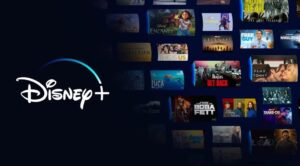Netflix, the streaming giant that has redefined the way we consume entertainment, operates on a business model that has disrupted the traditional television and film industry. With its vast library of content available at the click of a button, Netflix has become a household name, and its success can be attributed to a unique blend of content creation, data-driven decision-making, and subscriber-focused innovation.
For nearly five months now, Hollywood studios have seen picket signs lining their gates, as writers and actors within the industry come together to advocate for AI protections, improved wages, and a share of streaming profits. The challenge, however, is that streaming remains unprofitable for many studios.
The emergence of Netflix’s direct-to-consumer platform in 2007 disrupted the traditional economics of the media industry, raising doubts about the sustainability of this new business model. This transformation in the North American media industry over the past five years has been truly remarkable, according to Steven Schiffman, an adjunct professor at Georgetown University.
Legacy media giants such as Disney, Warner Bros. Discovery, Paramount, and NBCUniversal hurriedly attempted to compete with Netflix, which began producing original content in 2013 and gradually gained market share over the following five years. These studios bolstered their platforms with extensive content libraries and the promise of fresh, original shows and films for their audiences.
Nevertheless, the subscription-based streaming model differed significantly from the ad-driven traditional TV bundle. High licensing expenses and low revenues per subscriber eventually caught up with the studios, which had previously appeased shareholders with substantial subscription growth.
In 2022, Netflix reported a decline in subscribers, causing its stock and the stocks of other media companies to plummet. Disney followed suit and, as a result, both companies shifted their focus towards advertising, cracking down on password sharing, and raising prices rather than emphasizing subscription numbers.
Media organizations have also started reducing their content spending budgets. Disney’s CEO, Bob Iger, pledged to prioritize quality over quantity in both its streaming and theatrical businesses, citing Marvel as an example of excessive content production.
Despite these challenges, streaming remains the primary focus for these companies as consumers continue to abandon traditional cable TV in favor of streaming services. To compensate for their losses, media entities are resorting to strategies that once fueled the success of the traditional bundle.
“What’s the fundamental solution? In some way, shape, or form, it’s everything brought together,” said Ken Solomon, CEO of the Tennis Channel, owned by Sinclair, referring to the various business models in the media industry. He stressed the importance of understanding where to allocate more resources and how to integrate them to satisfy consumers.
Two strategies that have historically been effective for media companies—windowing content across different platforms and creating more cable channels to secure higher fees from bundles—are still generating profits.
“The seeds for this transformation were sown decades ago,” noted Solomon, highlighting how the pay TV bundle was once a cost-effective proposition until it became too expensive for consumers. This shift allowed Netflix to disrupt the entertainment industry’s financial dynamics.
Legacy media firms scrambled to keep pace with the evolving consumer demands, depleting other revenue streams in the process. Today, the industry is marked by turmoil, with companies like Disney and Warner Bros. Discovery undergoing reorganizations, involving job cuts and cost reductions, while exploring various strategies to generate profits.
“All of these companies spent more money than they likely should have,” remarked Marc DeBevoise, CEO and board director of Brightcove, a streaming technology company.
Netflix, with a substantial head start, remains the only company that has managed to turn streaming into a profitable venture. For everyone else, linear TV still plays a significant role. This poses a problem as customer declines accelerate, and streaming alone cannot offset these losses.
The entry of Netflix into the media landscape initiated a content arms race that, ultimately, has not yielded returns for any media company. Content spending surged across the industry, with each company investing billions of dollars in new shows and films to attract and retain subscribers.
“The networks had aligned with their streaming services and taken all the elasticity out of it. They were throwing money at a problem and hoping that it was going to solve itself,” explained Solomon. “There was no economics behind it.”
Furthermore, exclusive licensing deals were struck for shows like “The Office,” “Friends,” and “Seinfeld,” which viewers continuously watched. Studios also signed exclusive contracts with top writer-producers in hopes of creating projects that would capture audiences’ attention.
Show budgets have become a focal point, with production costs per episode significantly higher than in the past. This shift is particularly noticeable in comparison to the early days when major broadcast networks were the primary content creators.
Despite these challenges, media companies are striving to make streaming profitable by incorporating older business models that have proven effective. The subscription streaming model is now supplemented by strategies like advertising, content licensing to other platforms, password-sharing restrictions, and spacing out content releases across different platforms.
“Netflix finally understood, because of investor expectations, that subscriber numbers are not enough if the economics don’t add up,” noted Peter Csathy, founder and chair of advisory firm Creative Media.
Even the pay TV bundle, despite cord-cutting trends, continues to provide a reliable source of revenue. The recent dispute between Charter Communications and Disney underscored this fact, resulting in the bundling of Disney+ and ESPN+ with some pay TV subscriptions.
Disney and Netflix, which had long resisted ads, have started relying more on ad-supported offerings to boost subscriber growth and diversify revenue streams, even during a relatively soft ad market. This shift aligns with the rise of free, ad-supported streaming services like Fox Corp.’s Tubi and Paramount’s Pluto, which function similarly to traditional broadcast networks. Parent companies are capitalizing on ad revenue from these platforms, while other media companies, such as Warner Bros. Discovery, are providing content for licensing fees.
“In terms of the business models, they all ‘work,'” observed DeBevoise, emphasizing the coexistence of paid tiers for premium, timely content alongside free options supported by commercials. He predicts hybrid models will revive the dual-revenue cable TV model, combining subscription fees and ad revenue, with a focus on value and timing for consumers.
Overall, the evolving landscape of streaming and traditional media has led to significant changes in the industry’s economics, raising questions about fair compensation for actors and writers, and the future of media profitability.
(Source: Lillian Rizzo | Sarah Whitten | CNBC)







